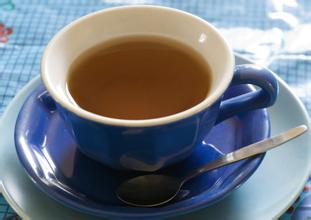Characteristics of Grinding degree of Coffee Coffee from Musk Coffee introduction to the processing method of fine coffee beans in producing areas
Cat poop coffee is produced from the feces of Indonesian coconut cats (a kind of civet cat), so it is called "cat poop coffee". This kind of animal mainly feeds on coffee beans. After fermentation in coconut cat stomach, protein is destroyed, short peptides and more free amino acids are produced, the bitter taste of coffee will be reduced, and the feces discharged will be the main raw material. Since coffee beans cannot be digested, they will be excreted. After washing and baking, they become cat feces coffee. Coffee critic Chris Rubin said,"The bouquet is so rich and intense, and the coffee is incredibly rich, almost syrupy. The thickness and chocolaty texture of it, and lingering on the tongue for a long time, pure aftertaste."
Indonesian coconut cats are omnivorous animals. In addition to eating seeds for a living, they also eat insects, snakes, birds, amphibians and reptiles. Therefore, the feces emitted by real wild coconut cats will be mixed with various substances. Indonesian local farmers catch coconut cats to raise and feed coffee beans to make them. However, there was still a certain difference between artificial cultivation and natural cultivation.
civet coffee
Civet coffee (5 photos)
In the coffee industry, cat poop coffee is widely regarded as a novelty product. According to the Specialty Coffee Association of America (SCAA),"the consensus in the industry is that it tastes bad." SCAA quoted a coffee expert as saying: "Obviously, the selling point of cat poop coffee lies in its story rather than its quality. Cat poop coffee scored two points lower than the lowest score of the other three coffees on SCAA criteria. Presumably the cat poop coffee processing reduces the acidity and flavor of the premium coffee and makes it more bland. Of course, many people seem to see this bland taste as a plus for this coffee."
Washington Post food columnist Tim Carman once commented on cat poop coffee sold in the United States and concluded that "it tastes just like Folger coffee." It smells like rotting, lifeless. It's like fossilized dinosaur shit in bathwater. I can't finish it."
Civets like to pick the sweetest, purest and juiciest fruits of the coffee tree for food. The coffee fruit passes through its digestive system, and only the pulp on the outside of the fruit is digested. The hard coffee beans are then excreted intact by the civet's digestive system.
In this way, in the process of digestion, the coffee beans have produced unparalleled magical changes, the flavor tends to be unique, the taste is particularly mellow, and the rich and mellow sweet taste is unmatched by other coffee beans. This is because the civet's digestive system destroys the protein in the coffee beans, making the coffee produced by the protein much less bitter, but increasing the round taste of the coffee beans.
Because wild civets are obviously better at picking good coffee fruits, which gives this coffee its unique characteristics

Important Notice :
前街咖啡 FrontStreet Coffee has moved to new addredd:
FrontStreet Coffee Address: 315,Donghua East Road,GuangZhou
Tel:020 38364473
- Prev

Flavor description of Blue Mountain Coffee with strong and mellow Flavor introduction to the characteristics of Grinding degree of varieties
The caffeine content of Blue Mountain Coffee is very low, which is less than half of that of other coffees, which is in line with the modern concept of health. The same coffee tree species, whether planted in Hawaii, Kenya, Papua New Guinea or anywhere else with a similar climate, cannot produce the flavor of blue mountain coffee beans. Pure Jamaican Blue Mountain Coffee perfectly combines the unique sour, bitter, sweet and mellow taste of coffee.
- Next

Peruvian Coffee Flavor description Grinding characteristics introduction to the taste of high-quality coffee beans in producing areas
Independence was declared on July 28, 821, and the Republic of Peru was established. On October 28, 1835, Bolivia and Peru formally merged, known as the Confederacy of Peru and Bolivia. On February 20, 1839, the Confederacy completely disintegrated. Slavery was abolished in 1854. From 1879 to 1883, Peru joined Bolivia and Chile in the South American Pacific War for saltpeter production. After Peru's defeat, Chile won the world's largest
Related
- Detailed explanation of Jadeite planting Land in Panamanian Jadeite Manor introduction to the grading system of Jadeite competitive bidding, Red bid, Green bid and Rose Summer
- Story of Coffee planting in Brenka region of Costa Rica Stonehenge Manor anaerobic heavy honey treatment of flavor mouth
- What's on the barrel of Blue Mountain Coffee beans?
- Can American coffee also pull flowers? How to use hot American style to pull out a good-looking pattern?
- Can you make a cold extract with coffee beans? What is the right proportion for cold-extracted coffee formula?
- Indonesian PWN Gold Mandrine Coffee Origin Features Flavor How to Chong? Mandolin coffee is American.
- A brief introduction to the flavor characteristics of Brazilian yellow bourbon coffee beans
- What is the effect of different water quality on the flavor of cold-extracted coffee? What kind of water is best for brewing coffee?
- Why do you think of Rose Summer whenever you mention Panamanian coffee?
- Introduction to the characteristics of authentic blue mountain coffee bean producing areas? What is the CIB Coffee Authority in Jamaica?

